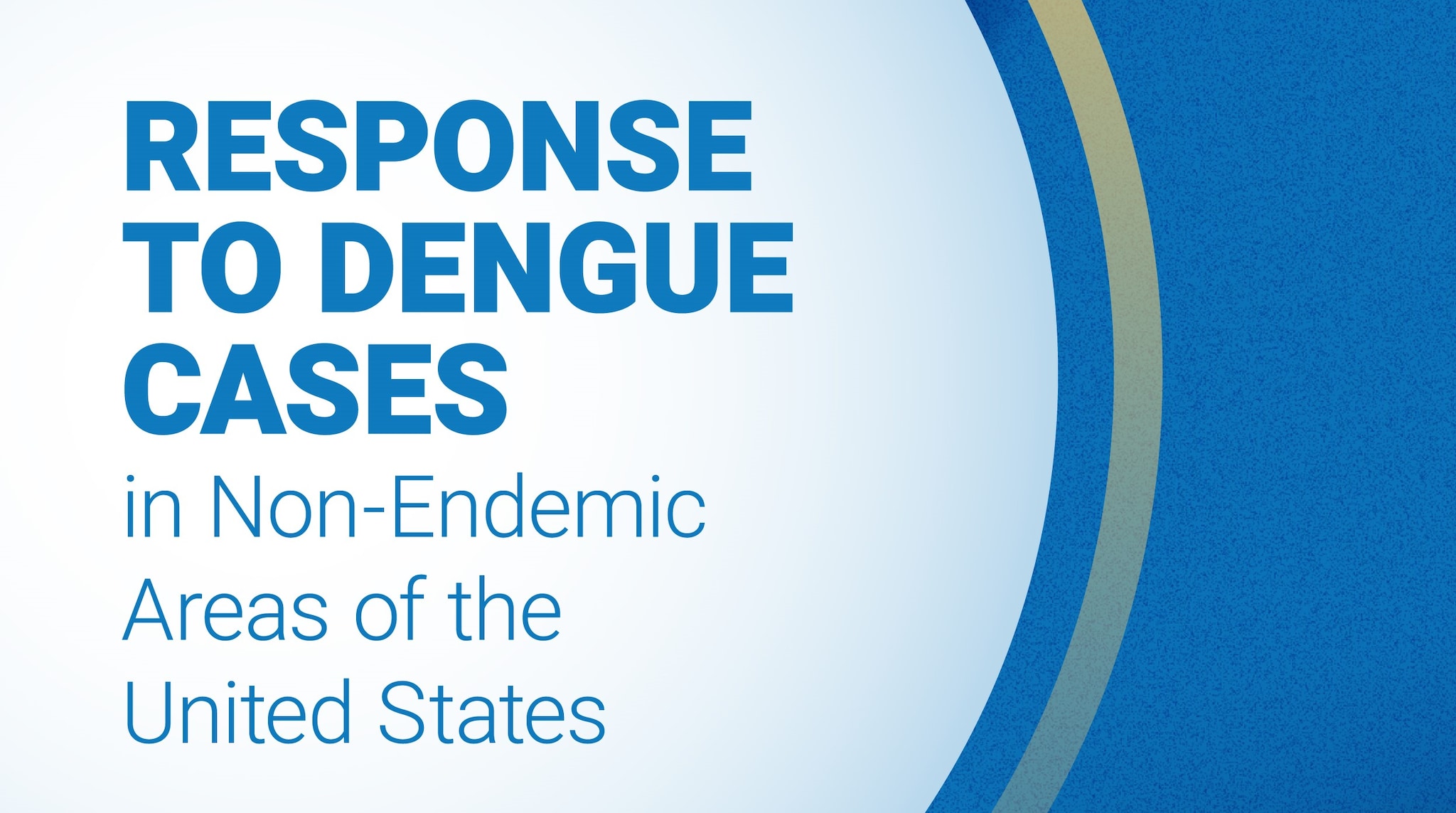Key points
- Health departments should investigate and report all dengue infections.
- Health departments should strongly consider implementing vector control when there is an increased risk of dengue transmission.
- Public health labs can submit dengue testing requests through CDC.
- Health departments can conduct education and community engagement activities regarding dengue prevention and mosquito control.
- CDC has compiled considerations for responding to travel-associated or locally acquired dengue cases in areas where the disease does not occur frequently.

Dengue in the United States
Most dengue cases reported in the continental United States occur in travelers who are infected elsewhere. However, dengue is endemic in six U.S. territories and freely associated states: Puerto Rico, American Samoa, the U.S. Virgin Islands, the Federated States of Micronesia, the Republic of Marshall Islands, and the Republic of Palau.
The mosquitoes that spread the dengue virus (DENV) can be found in much of the southern continental United States as well. Local transmission of dengue has occurred in Florida, Texas, Hawaii, Arizona, and California.
Current Dengue Outbreak
Global dengue cases rose sharply in 2024. In the United States, public health authorities in Puerto Rico declared an outbreak in March 2024, and local transmission of dengue has been reported in the U.S. Virgin Islands and Florida. Learn more about this outbreak.
Case Investigation and Reporting
- Health departments should investigate and report all DENV infections. The goal of the investigation is to confirm that a case represents a recent DENV infection and to determine whether it is travel-associated or locally acquired to help guide public health and vector control response activities.
- All suspected DENV infections should undergo laboratory testing when possible.
- Jurisdictions should use a standardized case report form to investigate all suspected dengue cases.
- For a comprehensive list of laboratory criteria, clinical descriptions, case classifications, and epidemiologic links, please refer to the 2015 CSTE dengue case definition.
Public health labs
Shipping Specimens
To ship specimens to CDC for dengue testing, please refer to the shipping instructions and search for dengue on the Test Directory tab (test order: CDC-10307).
Submitting Test Requests
All public health labs should submit test requests to the CDC through the CSTOR web portal.
For additional information, please contact CDC's Dengue Branch at dengue@cdc.gov.
Health departments
Mosquito control & surveillance
Dengue is primarily spread by Aedes aegypti and Aedes albopictus mosquitoes. Health departments should strongly consider implementing vector control when there is an increased risk of transmission, including high numbers of mosquitoes that can transmit DENV, high precipitation, adequate temperature range for mosquito proliferation, and an increase in travel-associated dengue cases.
See Mosquito Control for more information.
Education and community engagement
- Public messaging (newspapers, radio, TV, social media) can be used to inform people about what they can do to prevent mosquito bites, reduce places where mosquitoes lay their eggs, and to seek medical attention if dengue symptoms appear.
- Messages should be simple and easy to understand. They should use pictures and instructions to show what containers need to be removed or treated to keep mosquitoes from breeding.
- Local officials should conduct clean-up activities asking residents to clean their yards or patios and to offer help moving away heavy trash. Elderly residents may need extra help. This should be done about every three months to keep new habitats from emerging.
- Residents should be asked permission to inspect the property to eliminate or use larvicide to treat containers that hold water and are not used for pet or human consumption. They should be encouraged to discard containers that accumulate water and other actions that would prevent Aedes mosquitoes from breeding.
- Follow CDC's social media platforms:
